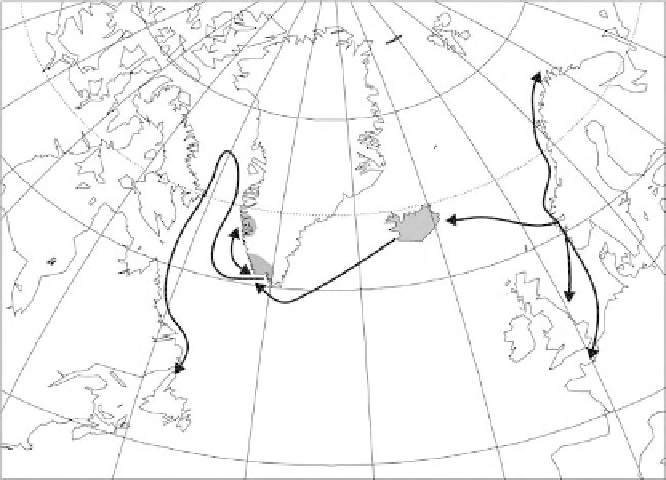Geoscience Reference
In-Depth Information
Tonga into the central Pacific, populating major island groups from Hawaii
to Easter Island to New Zealand. The Vikings explored the North Atlantic,
settling Iceland, Greenland, and briefly, the east coast of what is now Canada
(in around 1000).
Details of the climate and its variations in the North Atlantic during this period
come from a variety of proxy sources (see Section
6.2
). A good example is
sediment cores from Igaliku Fjord, Southern Greenland, which provide diatom
assemblies (Jensen et al.
2004
). The MWP, a period of warmer, drier climate,
occurred between 800 and 1250 in the North Atlantic area, with scattered cool-
ing events between 960 and 1140. Between 1250 and 1550 occurred a period of
transitional cooling, and the development of stormier, wetter conditions. This
culminated in the LIA, between 1580 and 1850, a period of harsher and stormier
conditions. Support also comes fromOgilvie et al.(
2000
), who review oxygen-18
evidence from ice cores from the Greenland ice cap. These show a period between
900 and 1200 with temperatures 1-2 8C warmer than subsequently.
Much has been published on the Viking movements westward across the
North Atlantic (Figure
8.2
), and the reasons for the rise and then demise of
outlier colonies, such as in Greenland. Information from a wide range of fields,
including archaeology, geology, paleoenvironmental, paleoclimatic, and histor-
ical records allows valid deductions about these colonies. Given the detail
known about the change in climate after 1250, it is easy to blame harsher
climatic conditions for the eventual loss of the Greenland settlements. But this
explanation is much too simple and ignores the complexities of societal structure
and interaction.
Figure 8.2 Viking
migrations across the North
Atlantic and the settlement
sites in Greenland.
1,000
500
0
AD 1000

Search WWH ::

Custom Search